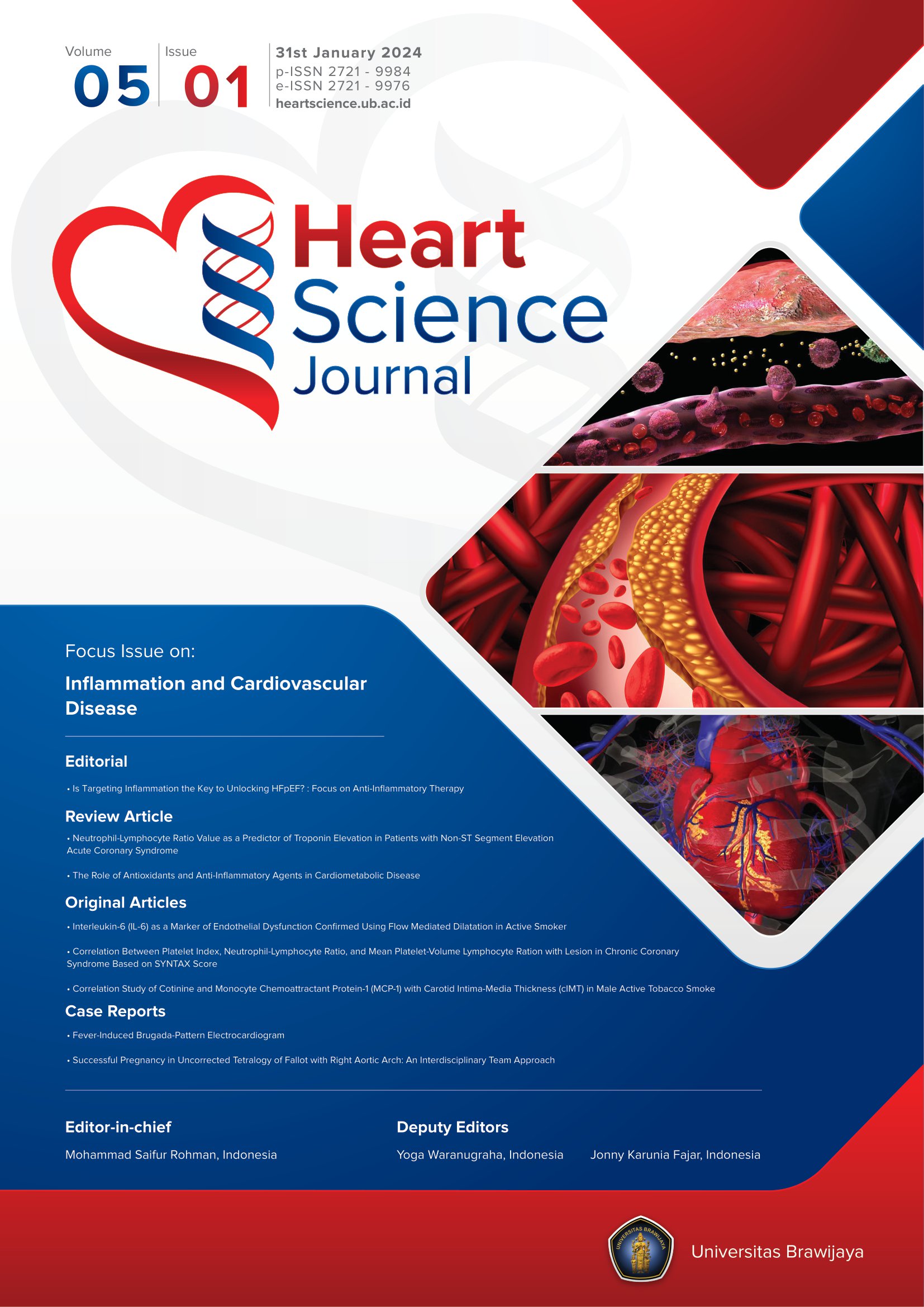Clinical Management of Syncope in Emergency Department Based on Risk Stratification : A Review Literature
Abstract
Background: Background Syncope is a frequent problem among patients who present to the ED, accounts for 3% of emergency department admission and 1% of hospitalization. It is characterized by a comparatively short and self-limited loss of consciousness, which is caused by temporary cerebral hypoperfusion.
Objective: Therefore, Risk stratification performed in the ED can guide triage decisions, and Risk-stratifying patients into low, moderate, and high-risk groups can assist medical decisions and determine the patient’s disposition.
Discussion: The central point of syncope progression pathophysiology is the reduction of systemic blood pressure (BP) with a drop in global cerebral blood flow. Based on the European Society of Cardiology (ESC) syncope practice guidelines, syncope is classified into three categories, Neurally-mediated syncope (neural reflex syncope), Orthostatic hypotension, Cardiac syncope. Proper evaluation of syncope cases could in turn enable timely hospitalization and treatment by syncope experts. Assessment of a patient with syncope can be difficult, requiring a wide variety of medical testing with high health care costs. Sometimes, even after a careful examina- tion, it may not be possible to determine a definitive etiology for syncope. Given these uncertainties, about one-third of emergency room (ER) syncope/collapse patients are referred for assessment to the hospital, including non to low-risk patients. establish the urgency of any further work-up.
Conclusion: Syncope assessment and treatment are very difficult, and syncope cases should be treated and dispositioned properly using proper risk stratification guidelines.
Keywords
Full Text:
PDFReferences
Olde Nordkamp , van Dijk N, Ganzeboom KS, Reitsma JB , Luitse JS , Dekker LR, et al. Syncope prevalence in the ED compared to general practice and population: a strong selection process. Am J Emerg Med. 2009; 27(3):271-9
Sun BC, Emond JA, Camargo CA Jr. Direct medical costs of syncope-related hospitalizations in the
United States. Am J Cardiol. 2005; 95:668–71. [PubMed: 15721118]
Runser LA, Gauer RL, Houser A. Syncope: Evaluation and Differential Diagnosis. American family physician. 2017 Mar 1;95(5).
Disertori M, Brignole M, Menozzi C, Raviele A, Rizzon P, Santini M, et al. Management of patients with syncope referred urgently to general hospitals. Europace. (2003) 5:283–91. doi: 10.1016/S1099-5129(03)00049-7
Moya A, Sutton R, Ammirati F, Blanc JJ, Brignole M, Dahm JB, Deharo JC, Gajek J, Gjesdal K,Krahn A, Massin M, Pepi M, Pezawas T, Ruiz, Granell R, Sarasin F, Ungar A, van Dijk JG, Walma EP, Wieling W. Guidelines for the diagnosis and management of syncope (version 2009). European Heart J. 2009; 30:2631–2671. [PubMed: 19713422]
Quinn JV. Yield of diagnostic tests in evaluating syncopal episodes in older patient: invited commentary. Arch Intern Med 2009;169:1305-6
Patel PR, Quinn JV. Syncope: a review of emergency department management and disposition. Clinical and experimental emergency medicine. 2015 Jun;2(2):67
Mann DL, Zipes DP, Libby P, Bonow RO. Braunwald's heart disease e-book: a textbook of cardiovascular medicine. Elsevier Health Sciences; 2014 Jul 30.
Brignole M, Moya A, de Lange FJ, Deharo JC, Elliott PM, Fanciulli A, Fedorowski A, Furlan R, Kenny RA, Martín A, Probst V. 2018 ESC Guidelines for the diagnosis and management of syncope. European heart journal. 2018 Mar 19;39(21):1883-948.
Linzer M, Yang EH, Estes NA 3rd, Wang P, Vorperian VR, Kapoor WN. Diagnosing syncope. Part 1: Value of history, physical examination, and electrocardiography. Clinical efficacy assessment project of the American College of Physicians. Ann Intern Med 1997;126:989-96.
Ryan DJ, Nick S, Colette SM, Roseanne K. Carotid sinus syndrome, should we pace? A multicentre randomized controlled trial (SAFE PACE 2). Heart 2010;96:347–51.
Puppala VK, Dickinson O, Benditt DG. Syncope: classification and risk stratification. Journal of Cardiology. 2014 Mar 1;63(3):171-7.
Anil OM. Syncope: Approach to diagnosis. Journal of Clinical and Preventive Cardiology. 2016 Jul 1;5(3):84.
Numeroso F, Mossini G, Lippi G, Cervellin G. Emergency department management of patients with syncope according to the 2018 ESC guidelines: Main innovations and aspect deserving a further improvement. International journal of cardiology. 2019 May 15;283:119-21.
Costantino G, Sun BC, Barbic F, Bossi I, Casazza G, Dipaola F, McDermott D, Quinn J, Reed MJ, Sheldon RS, Solbiati M. Syncope clinical management in the emergency department: a consensus from the first international workshop on syncope risk stratification in the emergency department. European heart journal. 2015 Aug 4;37(19):1493-8.
Sandhu RK, Sheldon RS. Syncope in the Emergency Department. Frontiers in Cardiovascular Medicine. 2019;6:180.
Reed MJ. Management of syncope in the emergency department based on risk stratification. Emergency Care Journal. 2018 May 18;14(1).
Shin TG, Kim JS, Song HG, Jo IJ, Sim MS, Park SJ. Standardized approaches to syncope evaluation for reducing hospital admissions and costs in overcrowded emergency departments. Yonsei medical journal. 2013 Sep 1;54(5):1110-8.
Sun BC, McCreath H, Liang LJ, et al. Randomized clinical trial of an emergency department observation syncope protocol versus routine inpatient admission. Ann Emerg Med 2014;64:167-75.
Akdemir B, Krishnan B, Senturk T, Benditt DG. Syncope: Assessment of risk and an approach to evaluation in the emergency department and urgent care clinic. indian pacing and electrophysiology journal. 2015 Mar 1;15(2):103-9
Colivicchi F, Ammirati F, Melina D, Guido V, Imperoli G, Santini M. Development and prospective validation of a risk stratification system for patients with syncope in the emergency department: the OESIL risk score. Eur Heart J 2003;24:811-9.
Benditt D. Syncope in adults: management. UpToDate [serie en línea] 2018 Nov [citado 2018 Nov 12] Disponible en: https://www. uptodate. com/contents/syncope-in-adults-management? search= Syncope% 20in% 20adults:% 20Management&source= search_result&selectedTitle= 1~ 150&usage_type= default&display_rank. 2018;1.
Brignole M, Sutton R, Menozzi C, Garcia-Civera R, Moya A, Wieling W, et al. Early application of an implantable loop recorder allows effective specific therapy in patients with recurrent suspected neurally mediated syncope. Eur Heart J 2006; 27: 1085-92.
Huff JS, Decker WW, Quinn JV, Perron AD, Napoli AM, Peeters S, et al. Clinical policy: Critical issues in the evaluation and management of adult patients presenting to the emergency department with syncope. Ann Emerg Med 2007; 49: 431-44.
DOI: https://doi.org/10.21776/ub.hsj.2020.001.04.03
Refbacks
- There are currently no refbacks.
Copyright (c) 2020 Heart Science Journal

This work is licensed under a Creative Commons Attribution 4.0 International License.









